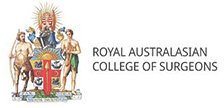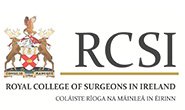Conditions
Hernia
Hernia is an opening formed by the lining of the abdominal cavity. Abdominal wall hernia occurs when the contents of the intestine bulges out of the abdominal wall.
Symptoms
Some of the commonly observed symptoms include abdominal pain, bulge in the abdominal area, groin pain which increases on coughing or lifting heavy things, and gurgling sensation, Your physician can confirm the presence of hernia by performing a physical examination. The size of hernia increases on coughing, bending, lifting, or straining. An ultrasound may be needed to look for hernia.
Inguinal Hernia
Inguinal hernia is a condition where a part of the intestine protrudes out of the abdomen through a tear in the abdominal wall. Inguinal hernia most commonly develops in the area between the abdomen and thighs, in the area of inguinal ring. Inguinal hernia affects people of all ages and is more common in men than women.
Inguinal hernia is of two types:
- Indirect inguinal hernia
- Direct inguinal hernia
Femoral Hernia
Femoral hernia appears as a bulge in the upper thigh, is a loop of intestine, or another part of the abdominal contents, that has been forced out of the abdomen through a channel called the "femoral canal"(a tube-shaped passage at the top of the front of the thigh).
Femoral hernia may be congenital or develop later in life. Certain factors such as chronic constipation, obesity, and stressful urination because of enlarged prostate may increase the risk of hernia.
Umbilical Hernia
Umbilical hernia is a small bulge around the umbilicus (belly button).
Recurrent Hernia
Recurrent hernia, as the name implies, recurs at the same site of the earlier hernia. Recurrence is more common in obese individuals and those who had multiple surgeries earlier. Recurrence is more common with incisional hernia because the risk factors such as obesity may persist and cause recurrence.
Surgery is the best approach for recurrent hernia. However, the difficulty or complications increase on subsequent repairs. Recurrent hernia can be repaired with open surgery or laparoscopic surgery and the chances of infections are minimal with the laparoscopic approach. Certain preventive measures such as treating chronic cough before treating hernias, avoiding smoking, avoiding strain on the abdomen during bowel movement, and avoiding lifting of heavy objects may help in preventing recurrence.
Gall Stones
The gallbladder is a pear shaped organ located on the right side of the abdomen, just below the liver. It stores bile fluid which is produced in the liver. Bile fluid contains water, proteins, fats, cholesterol, bile salts and bile pigments, which aid in the digestion of food. The gall bladder releases bile fluid into the intestine through the common bile duct following ingestion of food.
An imbalance in the components that form bile can lead to the formation of gallstones. Gallstones are small, hard deposits that form inside the gallbladder. The size of the gallstone can range from a small grain of sand to a large golf ball.
Gallstones are of two types:
- Cholesterol stones: These are yellowish-green in colour and chiefly made up of hardened cholesterol.
- Pigment stones: These are dark and small, usually present in numbers and primarily made of bilirubin, a yellowish bile pigment.
In some cases, a mix of both gallstone types can be seen.
Causes
The exact cause of gallstones is not clear. However, gallstones can form due to increased amounts of cholesterol or bilirubin; or inadequate emptying of the gallbladder.
The risk factors that increase the chance of having gallstones include:
- Pregnant women and women taking birth control pills or hormone replacement therapy
- Elderly people (>60 years)
- Genetic factors & family history of gallstones
- Ethnic background, esp. native Americans and Mexican-Americans
- Diabetes
- Obesity
- Rapid weight loss
- Use of cholesterol-lowering drugs
Signs and Symptoms
Gallstones do not always cause symptoms, and are sometimes called ‘silent stones’. These are often detected by your physician while diagnosing another condition. However, when the gallstone moves and lodges itself in the bile ducts, it causes signs and symptoms such as:
- Pain in the upper abdomen, upper back, and between the shoulder blades; lasting for several hours
- Nausea & Vomiting
- High fever with chills
- Yellowing of skin and eyes
- Other gastrointestinal problems such as bloating, indigestion, and heartburn
Complications
The complications of gallstones include:
- Blockage of the common bile duct leading to jaundice and infection
- Blockage of the pancreatic duct leading to pancreatitis
- Gallbladder inflammation (cholecystitis)
- Increased risk of gallbladder cancer
Diagnosis
Your physician diagnoses gallstones based on your symptoms, medical history, and physical examination. The diagnosis is confirmed based on findings from imaging studies such as ultrasound, CT (Contrast Tomography), MRI (Magnetic Resonance Imaging), and ERCP (Endoscopic Retrograde Cholangio- Pancreatography) which helps to locate gallstones in the gallbladder as well as bile ducts. Your doctor may also request blood tests to any complications of gallstones.
Treatment
Gallstones without symptoms do not require treatment. Treatment for symptomatic gallstones and its complications includes medications to dissolve the gallstones, and surgery to remove the gall bladder (cholecystectomy).
Medications can help dissolve gallstones but may take several months to years, so this option is reserved only for patients contraindicated to surgery.
The surgical removal of the gallbladder does not cause any serious problems as it is not necessary for you to live. Surgery is also recommended as gallstones can reoccur. Once the gall bladder is removed, the bile is directed from the liver into the intestine.
Gallbladder Disease
Gallbladder disease is an umbrella term for several conditions affecting the gallbladder. Inflammation of the gallbladder wall (cholecystitis) is responsible for a majority of the gallbladder diseases. Diseases of the gallbladder include gallstones, gallbladder polyps, gallbladder cancer, and sclerosing cholangitis.
Causes
Most cases of cholecystitis are associated with the presence of stones in the gallbladder. Usually, gallstones do not cause any problem or symptoms, but may sometimes block the bile duct, trapping the bile in the gallbladder. The trapped bile causes inflammation of the walls of the gallbladder, leading to swelling and pain. The inflamed gallbladder may also become infected.
Rarely, cholecystitis occurs without the presence of gallstones. This type of acute cholecystitis is referred to as a calculous cholecystitis. It is a more serious form of cholecystitis and tends to occur with gallbladder injury during surgery, prolonged fasting, critical illnesses or when a problem with the immune system occurs.
Symptoms
Gallbladder disease leads to severe abdominal pain. The pain is felt on the right side of the upper abdomen, and may travel to the back or right shoulder. Other symptoms may include nausea, vomiting and fever.
Diagnosis
Problems with the gallbladder are diagnosed by reviewing your medical history and performing a thorough physical examination. Your doctor may recommend X-ray imaging, abdominal ultrasound or nuclear scanning tests to detect the presence of gallstones which may be blocking the path of bile and thickening the gallbladder wall. Blood tests may be ordered to check for signs of infection, obstruction and jaundice.
Treatment
Treatment varies depending on the type of gallbladder disease. The first line treatment for most gallbladder diseases includes antibiotics. In cases of small and unclarified gallstones, certain medications can be prescribed to dissolve them. Lithotripsy (use of shock waves) is another non-invasive procedure that can be used to crush the gallstones, where the fragments of the stones are flushed out through the urine.
When you experience multiple gallbladder episodes, a surgery called cholecystectomy is most often recommended. The surgery can be performed through a less invasive approach or the traditional open surgery to remove the gallbladder.







